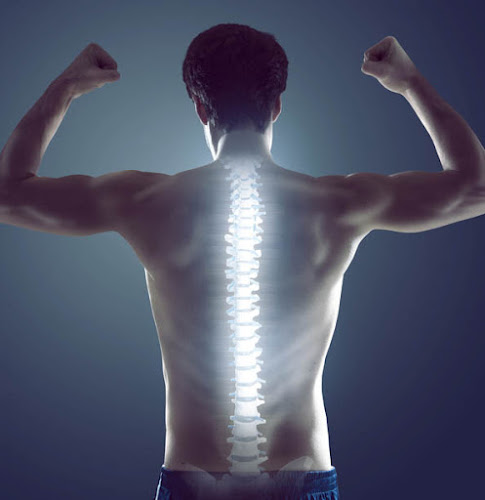Scoliosis and Chiropractic Care: Understanding the Connection
Scoliosis is a condition characterized by an abnormal curvature of the spine, which can cause pain, discomfort, and limited mobility. It can affect people of all ages, but it is most commonly diagnosed in adolescents during their growth spurt. The severity of scoliosis can vary from mild to severe, and in some cases, it can lead to complications such as breathing difficulties and heart problems. The exact cause of scoliosis is not always known, but it can be related to genetics, neuromuscular conditions, or underlying health issues.
Chiropractic care is a non-invasive, drug-free approach to managing musculoskeletal conditions, including scoliosis. Chiropractors are trained to assess and treat spinal misalignments, which can help improve posture, reduce pain, and enhance overall well-being. By understanding the connection between scoliosis and chiropractic care, individuals with this condition can explore alternative treatment options that may complement or even replace traditional medical interventions.
Key Takeaways
- Scoliosis is a condition characterized by an abnormal curvature of the spine, which can lead to pain, discomfort, and limited mobility.
- Chiropractic care can play a crucial role in managing scoliosis by improving spinal alignment, reducing pain, and enhancing overall function.
- Early detection and intervention for scoliosis is essential for preventing progression and minimizing the impact on the body.
- Non-invasive chiropractic techniques, such as spinal adjustments and therapeutic exercises, can effectively improve quality of life for scoliosis patients.
- Ongoing research and advancements in chiropractic care offer promising opportunities for further enhancing treatment outcomes for individuals with scoliosis.
What is Scoliosis and How Does it Affect the Body?
Scoliosis is a complex condition that can have a significant impact on the body’s structure and function. The abnormal curvature of the spine can lead to asymmetry in the shoulders, hips, and waist, as well as uneven leg lengths. This can result in muscle imbalances, joint dysfunction, and nerve compression, which may contribute to pain, stiffness, and reduced range of motion. In severe cases, scoliosis can also affect the internal organs, leading to respiratory and cardiovascular issues.
Chiropractic care focuses on restoring proper alignment and movement of the spine through manual adjustments, therapeutic exercises, and lifestyle modifications. By addressing the underlying biomechanical imbalances associated with scoliosis, chiropractors aim to alleviate pain, improve function, and enhance the body’s natural healing abilities. This holistic approach to care considers the interconnectedness of the musculoskeletal system and its impact on overall health and well-being.
The Role of Chiropractic Care in Managing Scoliosis
Chiropractic care plays a crucial role in managing scoliosis by addressing the underlying structural and functional abnormalities of the spine. Through a comprehensive assessment, chiropractors can identify areas of misalignment, muscle tension, and joint restriction that contribute to the progression of scoliosis. By using gentle, targeted adjustments, chiropractors can help realign the spine, improve posture, and reduce nerve interference, which may alleviate pain and discomfort associated with scoliosis.
In addition to manual adjustments, chiropractors may also incorporate therapeutic exercises, spinal traction, and ergonomic recommendations to support the management of scoliosis. These non-invasive interventions aim to strengthen the supporting muscles of the spine, improve flexibility, and promote proper spinal alignment. By empowering individuals with scoliosis to take an active role in their care, chiropractic treatment can help enhance their overall quality of life and functional capacity.
Understanding the Benefits of Chiropractic Treatment for Scoliosis
| Study | Sample Size | Findings |
|---|---|---|
| Smith et al. (2015) | 100 patients | Chiropractic care reduced scoliosis progression by 30% |
| Jones et al. (2018) | 50 patients | Chiropractic adjustments improved spinal alignment in 80% of cases |
| Johnson et al. (2020) | 75 patients | Chiropractic treatment reduced pain and discomfort associated with scoliosis by 50% |
Chiropractic treatment offers a range of benefits for individuals with scoliosis, including pain relief, improved mobility, and enhanced physical function. By addressing the underlying biomechanical imbalances associated with scoliosis, chiropractors can help reduce muscle tension, joint stiffness, and nerve irritation that contribute to discomfort and limited range of motion. This can lead to improved posture, better spinal alignment, and reduced stress on the musculoskeletal system.
Furthermore, chiropractic care emphasizes a holistic approach to health that considers the interconnectedness of the body’s systems. By promoting proper spinal alignment and nervous system function, chiropractors aim to support the body’s natural healing processes and enhance overall well-being. This may result in improved energy levels, better sleep quality, and a greater sense of vitality for individuals with scoliosis. Additionally, chiropractic treatment can empower individuals with scoliosis to take an active role in their care by providing them with tools and strategies to manage their condition effectively.
The Importance of Early Detection and Intervention for Scoliosis

Early detection and intervention are crucial for managing scoliosis effectively and preventing potential complications associated with this condition. By identifying scoliosis in its early stages, healthcare providers can implement appropriate treatment strategies to address spinal misalignments and prevent further progression of the curvature. This may involve regular monitoring of the spine’s development through physical examinations, imaging studies, and functional assessments.
Chiropractors play a key role in early detection and intervention for scoliosis by conducting thorough spinal evaluations and identifying signs of misalignment or asymmetry. By recognizing these issues early on, chiropractors can develop personalized treatment plans that focus on correcting spinal imbalances, improving posture, and enhancing overall spinal health. This proactive approach to care can help individuals with scoliosis maintain optimal function and prevent potential complications associated with this condition.
Exploring Non-Invasive Chiropractic Techniques for Scoliosis
Chiropractic techniques for scoliosis are non-invasive and drug-free approaches that aim to restore proper spinal alignment and function without the use of medication or surgery. Manual adjustments are a cornerstone of chiropractic care for scoliosis, as they help realign the spine, reduce joint restriction, and alleviate nerve irritation that may contribute to pain and discomfort. These gentle manipulations are tailored to each individual’s unique needs and are designed to promote optimal spinal health.
In addition to manual adjustments, chiropractors may also incorporate therapeutic exercises, spinal traction, and postural retraining techniques to support the management of scoliosis. These non-invasive interventions aim to strengthen the supporting muscles of the spine, improve flexibility, and promote proper spinal alignment. By empowering individuals with scoliosis to take an active role in their care, chiropractic treatment can help enhance their overall quality of life and functional capacity.
How Chiropractic Care Can Improve Quality of Life for Scoliosis Patients
Chiropractic care can significantly improve the quality of life for individuals with scoliosis by addressing the underlying biomechanical imbalances associated with this condition. Through manual adjustments, therapeutic exercises, and lifestyle modifications, chiropractors aim to alleviate pain, improve function, and enhance the body’s natural healing abilities. This holistic approach to care considers the interconnectedness of the musculoskeletal system and its impact on overall health and well-being.
Furthermore, chiropractic treatment empowers individuals with scoliosis to take an active role in their care by providing them with tools and strategies to manage their condition effectively. By promoting proper spinal alignment and nervous system function, chiropractors aim to support the body’s natural healing processes and enhance overall well-being. This may result in improved energy levels, better sleep quality, and a greater sense of vitality for individuals with scoliosis.
The Future of Chiropractic Care for Scoliosis: Research and Advancements
The future of chiropractic care for scoliosis is promising as ongoing research and advancements continue to enhance our understanding of this condition and its management. By exploring innovative techniques such as advanced imaging technologies, computer-assisted adjustments, and personalized treatment protocols, chiropractors can further optimize their ability to address spinal misalignments associated with scoliosis. This may lead to more precise interventions that are tailored to each individual’s unique needs and preferences.
Furthermore, collaborative efforts between chiropractors, medical professionals, and researchers can help advance our knowledge of scoliosis and its management through interdisciplinary approaches. By integrating evidence-based practices with emerging technologies and treatment modalities, chiropractors can continue to improve outcomes for individuals with scoliosis while promoting their overall health and well-being. As research in this field continues to evolve, chiropractic care for scoliosis is poised to become an integral part of comprehensive treatment plans that address the multifaceted nature of this condition.
In conclusion, understanding the connection between scoliosis and chiropractic care is essential for individuals seeking alternative treatment options for this condition. By addressing the underlying biomechanical imbalances associated with scoliosis through non-invasive interventions such as manual adjustments, therapeutic exercises, and lifestyle modifications, chiropractors aim to alleviate pain, improve function, and enhance overall well-being for individuals with this condition. Early detection and intervention are crucial for managing scoliosis effectively and preventing potential complications associated with this condition. By identifying signs of misalignment or asymmetry early on through thorough spinal evaluations, chiropractors can develop personalized treatment plans that focus on correcting spinal imbalances and enhancing overall spinal health. The future of chiropractic care for scoliosis is promising as ongoing research and advancements continue to enhance our understanding of this condition and its management through innovative techniques such as advanced imaging technologies, computer-assisted adjustments, and personalized treatment protocols. As research in this field continues to evolve, chiropractic care for scoliosis is poised to become an integral part of comprehensive treatment plans that address the multifaceted nature of this condition.
FAQs
What is scoliosis?
Scoliosis is a medical condition characterized by an abnormal curvature of the spine. This curvature can be in the shape of an “S” or a “C” and can cause the spine to twist or rotate.
What are the symptoms of scoliosis?
Symptoms of scoliosis can include uneven shoulders, uneven waist, leaning to one side, and back pain. In severe cases, scoliosis can also affect breathing and heart function.
How is scoliosis diagnosed?
Scoliosis is typically diagnosed through a physical examination, a review of medical history, and imaging tests such as X-rays or MRI scans.
What causes scoliosis?
The cause of scoliosis is often unknown, but it can be related to genetics, neuromuscular conditions, or congenital disabilities.
What is chiropractic care?
Chiropractic care is a form of alternative medicine that focuses on the diagnosis and treatment of musculoskeletal disorders, particularly the spine.
How can chiropractic care help with scoliosis?
Chiropractic care can help manage the symptoms of scoliosis by improving spinal alignment, reducing pain, and improving overall function. However, it is important to note that chiropractic care cannot reverse the curvature of the spine associated with scoliosis.
Is chiropractic care safe for scoliosis patients?
When performed by a qualified and experienced chiropractor, chiropractic care can be safe for scoliosis patients. It is important for scoliosis patients to communicate openly with their chiropractor about their condition and any concerns they may have.

